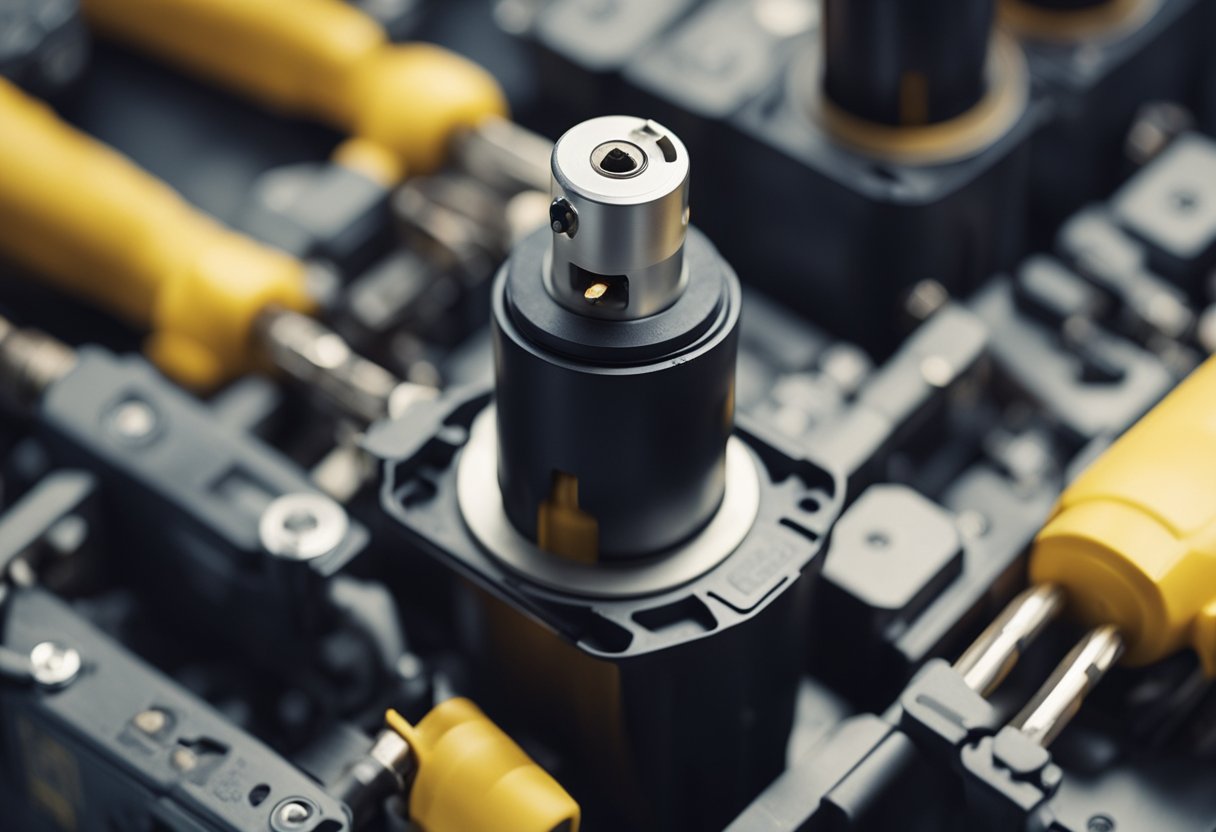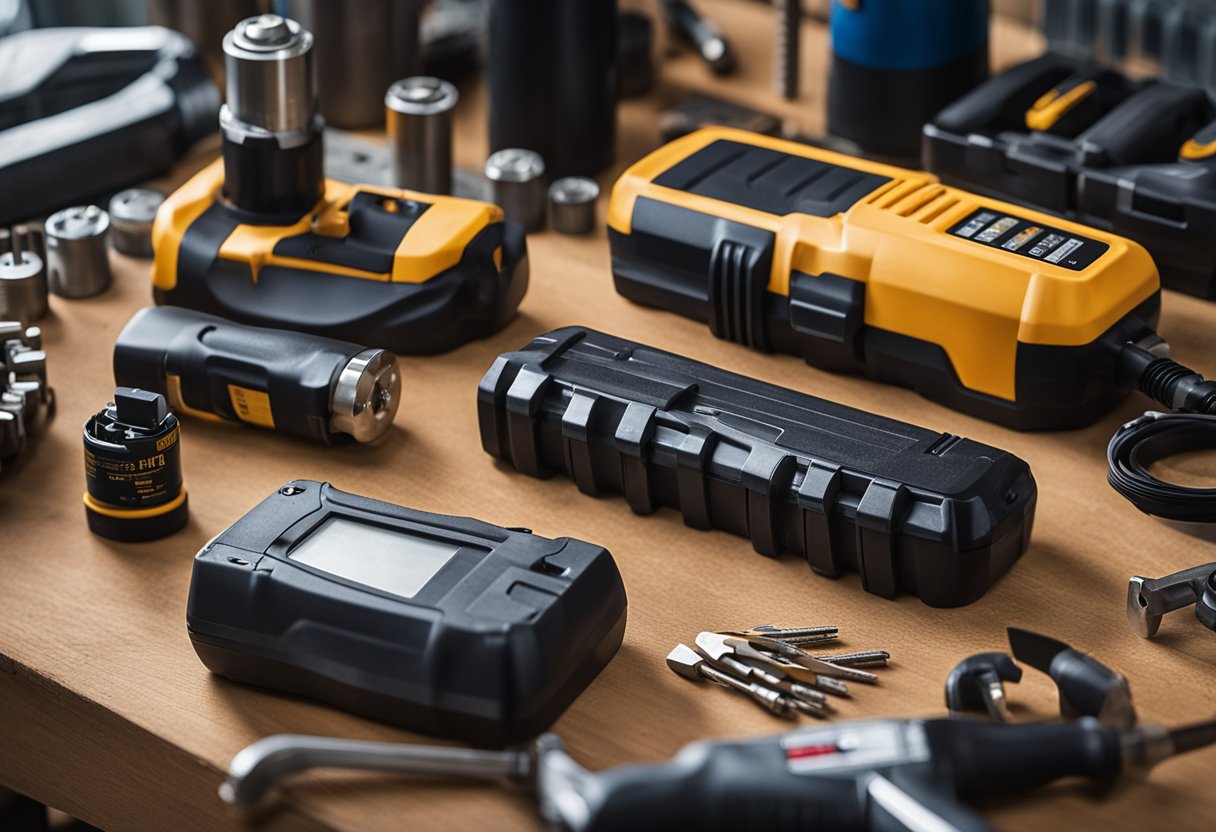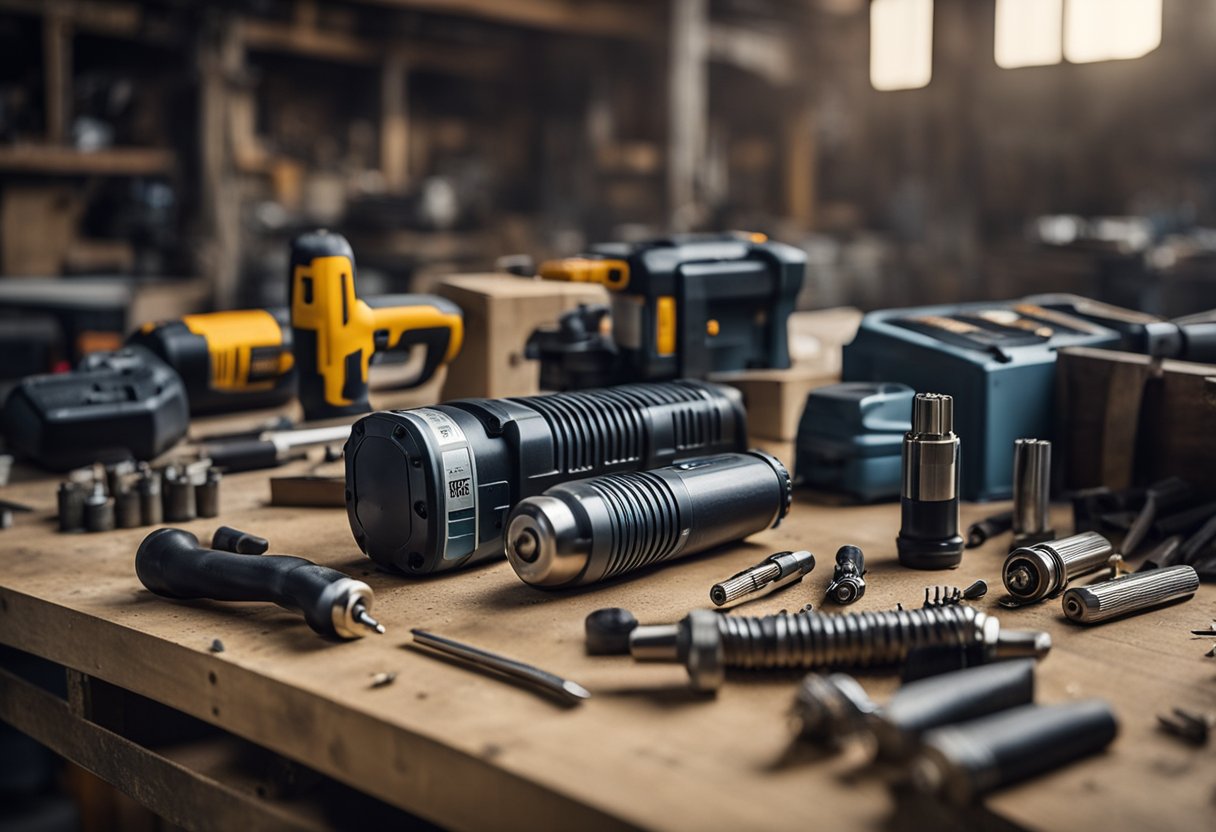As someone who frequently uses power tools, I know the importance of having a reliable drill battery. Nothing is more frustrating than being in the middle of a project and having your drill battery die. But how long do drill batteries last? The answer to this question depends on several factors, including the type of battery, the frequency of use, and how well you maintain it.
Understanding drill batteries is the first step in determining how long they will last. Cordless drill batteries come in two main types: nickel-cadmium (NiCad) and lithium-ion (Li-ion). NiCad batteries are older technology and are less expensive, but they have a shorter lifespan and can suffer from memory effect. Li-ion batteries are newer technology, have a longer lifespan, and are less prone to memory effect.
Factors influencing battery lifespan include how often you use the drill, the temperature and humidity of your work environment, and how well you maintain the battery. Overcharging, memory effect, and self-discharge can all impact the lifespan of your drill battery. By understanding these factors and taking steps to maintain your battery, you can extend its lifespan and get the most out of your cordless drill.
Key Takeaways
- The lifespan of a drill battery depends on several factors, including the type of battery, frequency of use, and maintenance.
- NiCad batteries are less expensive but have a shorter lifespan, while Li-ion batteries are newer and have a longer lifespan.
- Overcharging, memory effect, and self-discharge can all impact the lifespan of your drill battery, so proper maintenance is key.
Understanding Drill Batteries
https://www.youtube.com/watch?v=Z21_5VVsN6o&embed=true
As a handyman, I know the importance of having a reliable cordless drill. One of the most critical components of a cordless drill is the battery. Understanding the different types of batteries available and their lifespan is crucial to ensure that your drill is always ready to use.
There are three main types of batteries used in cordless drills: nickel-cadmium (Ni-Cd), nickel-metal hydride (Ni-MH), and lithium-ion (Li-ion). Ni-Cd batteries are the oldest and have been around for decades. They are inexpensive but have a lower energy density and capacity compared to Ni-MH and Li-ion batteries. Ni-MH batteries are a step up from Ni-Cd batteries in terms of energy density and capacity, but they are still not as good as Li-ion batteries. Li-ion batteries are the most advanced and have the highest energy density and capacity. They are also the most expensive.
The lifespan of a cordless drill battery depends on several factors, including the type of battery, the capacity of the battery, and the frequency of use. Li-ion batteries have the longest lifespan, typically lasting anywhere from 2 to 5 years, depending on usage and maintenance. Ni-MH batteries last for about 1.5 to 3 years, while Ni-Cd batteries last for about 1 to 2 years.
Battery capacity is another critical factor that affects the lifespan of a cordless drill battery. The higher the capacity, the longer the battery will last. However, higher capacity batteries are also more expensive. It is essential to balance the cost of the battery with the capacity needed for your specific tasks.
In conclusion, understanding the different types of batteries available and their lifespan is crucial to ensure that your cordless drill is always ready to use. Li-ion batteries are the most advanced and have the longest lifespan, but they are also the most expensive. Ni-MH batteries are a good middle ground, while Ni-Cd batteries are the least expensive but have the shortest lifespan. When choosing a battery, it is essential to balance the cost with the capacity needed for your specific tasks.
Factors Influencing Battery Lifespan
As someone who has been using cordless drills for years, I can confidently say that battery lifespan is a crucial factor to consider when buying a cordless drill. In my experience, the following factors can influence the lifespan of a cordless drill battery:
1. Battery Quality
The quality of the battery is one of the most important factors that determine the lifespan of a cordless drill battery. Lithium-ion batteries are the most common battery type for cordless drills, and they typically last anywhere from one to three years, depending on usage. However, not all lithium-ion batteries are created equal. Some brands offer higher quality batteries that can last longer and perform better than others.
2. Usage Frequency
The frequency and intensity of use can also affect the lifespan of a cordless drill battery. If you use your cordless drill frequently and for extended periods, the battery is likely to wear out faster than if you only use it occasionally.
3. Charging Habits
Another factor that can influence the lifespan of a cordless drill battery is your charging habits. Overcharging or undercharging the battery can damage it and reduce its lifespan. It is essential to follow the manufacturer’s instructions on charging and discharging the battery to ensure that it lasts as long as possible.
4. Temperature and Moisture
High temperatures and extreme heat can also affect the lifespan of a cordless drill battery. If you store your cordless drill battery in a hot or humid environment, it can damage the battery and reduce its lifespan. It is essential to store the battery in a cool, dry place to ensure that it lasts as long as possible.
In summary, the lifespan of a cordless drill battery is influenced by several factors, including battery quality, usage frequency, charging habits, and temperature and moisture. By taking care of your battery and following the manufacturer’s instructions, you can extend its lifespan and get the most out of your cordless drill.
Charging and Overcharging Impact
https://www.youtube.com/watch?v=LRfvgTFE9zk&embed=true
As a DIY enthusiast, I know how important it is to have a cordless drill with a long-lasting battery. One of the key factors that affect the lifespan of a cordless drill battery is charging habits. It is important to charge the battery properly to extend its life.
When charging your cordless drill battery, make sure to use the charger that came with the battery. Using a different charger may cause damage to the battery. Also, ensure that the charger is compatible with the battery’s voltage and capacity.
It is important to avoid overcharging the battery as well. Overcharging can cause the battery to heat up and shorten its lifespan. Most chargers have a built-in mechanism to prevent overcharging. Once the battery is fully charged, the charger will stop charging automatically.
Another factor that affects the lifespan of a cordless drill battery is the number of charging cycles. A charging cycle is the process of charging the battery from empty to full and then discharging it completely. The number of charging cycles a battery can complete before it starts to degrade depends on the battery’s chemistry and capacity.
It is important to allow the battery to cool down before charging it again. Charging a hot battery can cause damage to the cells and shorten the battery’s lifespan. Therefore, it is recommended to wait for the battery to cool down before charging it again.
In conclusion, charging habits play a crucial role in extending the lifespan of a cordless drill battery. To ensure that your battery lasts as long as possible, use the correct charger, avoid overcharging, and allow the battery to cool down before charging it again.
Memory Effect and Self-Discharge
https://www.youtube.com/watch?v=HFClZ4e0q-I&embed=true
When it comes to cordless drill batteries, two factors that can significantly affect their lifespan are memory effect and self-discharge.
Memory Effect: This phenomenon occurs when a battery is not fully discharged before recharging. Over time, the battery begins to “remember” the shorter discharge cycle and loses its ability to hold a full charge. This can lead to a shorter overall lifespan for the battery. However, it’s important to note that memory effect is more common in older nickel-cadmium (NiCad) batteries than in newer lithium-ion (Li-ion) batteries [1].
Self-Discharge: All batteries lose some charge over time, even when not in use. This is known as self-discharge. The rate of self-discharge varies depending on the type of battery, with some batteries losing charge faster than others. For example, Li-ion batteries have a lower self-discharge rate than NiCad batteries [2].
To minimize the impact of memory effect and self-discharge on cordless drill batteries, it’s important to follow some best practices. For example, it’s recommended to fully discharge the battery before recharging it, especially for older NiCad batteries. Additionally, storing the battery in a cool, dry place can help slow down the rate of self-discharge [3].
Overall, understanding memory effect and self-discharge can help you prolong the lifespan of your cordless drill batteries. By following best practices and using high-quality batteries, you can ensure that your cordless drill is always ready for action when you need it.
[1] Source: How Long Does The Battery On A Cordless Drill Last?
[2] Source: How Long Do Cordless Drill Batteries Last? Tips to Extend Battery Life
[3] Source: How should I store the batteries of my cordless drill?
Maintenance and Care
Maintaining and caring for your cordless drill battery is crucial to ensure that it lasts as long as possible. Proper maintenance can help prolong the battery life and save you money in the long run. Here are some tips for maintaining and caring for your cordless drill battery:
Keep the Battery Contacts Clean
One of the most important things you can do to maintain your cordless drill battery is to keep the battery contacts clean. Over time, dirt and dust can accumulate on the contacts, which can prevent the battery from charging properly. To clean the contacts, use a soft, dry cloth or a cotton swab dipped in rubbing alcohol. Be sure to clean both the contacts on the battery and on the drill.
Store the Battery Properly
When you’re not using your cordless drill, it’s important to store the battery properly. Ideally, you should store the battery in a cool, dry place, away from direct sunlight and heat. If you’re not going to be using the battery for an extended period of time, it’s a good idea to charge it to about 50% capacity before storing it. This can help prevent the battery from losing its charge over time.
Use the Right Charger
Using the right charger is also important for maintaining your cordless drill battery. Using the wrong charger can damage the battery and reduce its lifespan. Be sure to use the charger that came with your drill, or a charger that is recommended by the manufacturer.
Check the Terminals
Finally, it’s a good idea to check the terminals on your cordless drill battery periodically. If the terminals are corroded or damaged, it can prevent the battery from charging properly. To check the terminals, remove the battery from the drill and inspect the terminals for any signs of corrosion or damage. If you notice any issues, use a fine-grit sandpaper to gently remove any corrosion or debris from the terminals.
By following these tips, you can help ensure that your cordless drill battery lasts as long as possible. Proper maintenance and care can help you get the most out of your battery, and save you money in the long run.
Choosing the Right Drill Battery
https://www.youtube.com/watch?v=e_UxGlAv2H8&embed=true
As a DIY enthusiast or a professional woodworker, choosing the right drill battery can make a significant difference in your work. When purchasing a cordless drill, it is essential to consider the type of battery that comes with it. Battery range, power, and manufacturer are some of the factors to consider.
Lithium-ion batteries are the most common type of batteries for cordless drills. They have a longer lifespan than other types of batteries and can last anywhere from one to five years, depending on usage and quality. Cheaper, lower-quality batteries may need to be replaced more often, while higher-quality batteries can last up to five years or more with proper maintenance.
When choosing a drill battery, it is essential to consider the range of the battery. If you are using the drill for extended periods, you may need a battery with a longer range. A larger battery may also be necessary for larger projects.
The power of the battery is another critical factor to consider. A battery with a higher voltage will typically provide more power, allowing you to work on tougher projects. However, a higher voltage battery may also be heavier, which can be a consideration if you are working on projects for an extended period.
It is also essential to consider the manufacturer when choosing a drill battery. Some manufacturers produce batteries that are more reliable and longer-lasting than others. It is worth investing in a high-quality battery from a reputable manufacturer to ensure that you get the most out of your cordless drill.
In summary, choosing the right drill battery is crucial for your DIY projects or woodworking. When purchasing a cordless drill, consider the battery range, power, and manufacturer to ensure that you get the most out of your investment. Opt for a high-quality lithium-ion battery that provides a longer lifespan and more power to handle tough projects.
Conclusion
Based on my research and personal experience, the lifespan of cordless drill batteries varies depending on several factors. These factors include usage patterns, battery quality, and maintenance practices.
To maximize the efficiency of cordless drill batteries, it is important to use them properly and avoid overcharging or undercharging them. Overcharging can lead to battery degradation, while undercharging can cause damage to the battery cells.
It is also important to choose high-quality batteries that can withstand frequent use and last longer than cheaper, lower-quality batteries. Lithium-ion batteries are the most common type of battery used in cordless drills and can last anywhere from one to five years with proper maintenance.
Cords can also impact the lifespan of cordless drill batteries. Using a corded drill instead of a cordless one can eliminate the need for batteries altogether, which can save money in the long run.
Overall, by following proper usage and maintenance practices, choosing high-quality batteries, and considering the use of corded drills, it is possible to extend the lifespan of cordless drill batteries and maximize their efficiency.
Frequently Asked Questions
https://www.youtube.com/watch?v=BtMaLuYp1PU&embed=true
What is the life expectancy of a cordless drill?
The life expectancy of a cordless drill depends on various factors, including the quality of the drill, frequency of use, and proper maintenance. Generally, a well-made cordless drill can last anywhere from 5 to 10 years with regular use and proper care. However, there are instances where a drill may only last a couple of years, particularly if it’s used for heavy-duty projects or if the owner neglects to charge and maintain the battery properly.
How long does a 20V lithium battery last per charge?
A 20V lithium battery typically lasts for 30 minutes to an hour per charge, depending on the usage and the brand of the battery. However, higher-quality batteries can last up to 2 hours or more per charge. It’s essential to ensure that the battery is fully charged before use to maximize its runtime.
How long do Ryobi batteries last per charge?
Ryobi batteries can last anywhere from 30 minutes to an hour per charge, depending on the usage and the type of battery. Ryobi offers a range of batteries, including 18V, 40V, and 60V batteries, with varying runtimes. Higher voltage batteries tend to last longer per charge than lower voltage batteries.
Do lithium batteries expire if not used?
Yes, lithium batteries can expire if not used for an extended period. Lithium batteries have a limited shelf life, and they can lose their charge over time, even if they’re not being used. It’s recommended to charge lithium batteries every six months to prevent them from losing their charge and becoming unusable.
How long does a 18v 1.5Ah battery last?
An 18V 1.5Ah battery typically lasts for 20-30 minutes per charge, depending on the usage and the brand of the battery. However, higher-quality batteries can last up to an hour or more per charge. It’s important to ensure that the battery is fully charged before use to maximize its runtime.
How do I know if my cordless drill battery is bad?
There are several signs that indicate a bad cordless drill battery, including reduced runtime, slow charging, overheating, and swelling. If you notice any of these signs, it’s recommended to replace the battery as soon as possible to prevent damage to the drill and ensure optimal performance.

Hi, I’m Sal Muller of Tooltrip.com. My DIY experience led me to understand essential power tools for home projects. Tooltrip.com guides enthusiasts and professionals in choosing right tools for any job. I provide concise top tool reviews for easier, efficient DIY.





